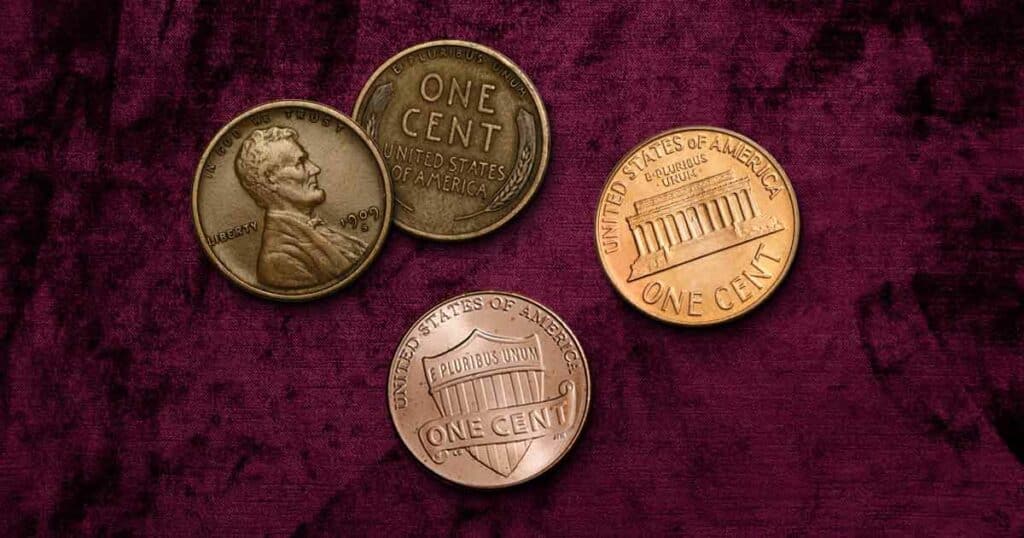
Penny vs. Cent Coin: Is There a Difference?
The terms “penny” and “cent” are used interchangeably in the United States to refer to the coin representing one-hundredth of the value of the U.S. dollar. While the penny and cent are the same things in America, the intended vernacular for the U.S. coin was “cent.“ Historically, “penny” referred to the British coin worth 1/240th of the British pound. So, why do we use the term penny synonymously for the American one-cent piece? The answer can be traced back to the country’s history as a British colony.
Origins of Penny and Cent
The term “penny” has a rich history that dates back centuries. The word itself is derived from the Old English word “pening,” which refers to coin or money. In medieval England, the penny was a standard silver coin that remained a significant currency unit for centuries. Over time, various countries adopted its version of the penny, each with distinct designs and materials.
However, “cent” is derived from the Latin word “centum,” meaning one hundred. The term was adopted by the United States in 1793 when it established a decimal currency system. A cent represents one-hundredth of a dollar. This system allowed for more straightforward calculations and transition from the British pounds, shillings, and pence system prevalent in the American colonies.
Currency of the American Colonies
Before the United States was independent, the thirteen colonies used a mix of currencies and commodities for commerce. Britain was unwilling to allow the colonies to mint their own currency, and the British gold and silver pieces were uncommon throughout the Americas. Therefore, people had to adapt to establish an exchange system for goods and services. Commodities used for trade in the original colonies were items such as tobacco or other crops, while the currencies fell into two distinct categories: coins and paper money.
Coins such as the Spanish dollar were popular throughout this time, along with a few British coins. One British coin circulating was the penny, worth 1/240th of a pound. Paper money included fiat currency, banknotes, and tobacco notes. These mediums of exchange were not universal throughout the colonies, meaning an item accepted in Massachusetts might not be accepted in Virginia.
The American Way: U.S. Currency
After the United States of America gained its independence from Great Britain, one of the new government’s first acts was to establish a universal currency system. The Coinage Act of 1792 established the U.S. Mint and the silver dollar as the primary money unit. Additionally, it determined the U.S. currency would be a decimal system, which means the dollar would be divisible into one hundred equal parts. The cent would be one of those parts, and the original coin was produced using pure copper and featured a woman with flowing hair.
The prolonged historical use of the British currency was still evident, with people calling the new cent a “penny” out of habit, and the name stuck as a slang term for the one-cent piece. Today, the words “penny” and “cent” are considered synonyms in the United States.
Evolution of the American Cent
Since its inception in 1792, the American cent has undergone significant evolution. In 1856, the cent gained a new composition of 88% copper and 12% nickel, along with a depiction of an eagle in flight. Additionally, the Indian Head design were minted from 1859 to 1909.
The most iconic change occurred in 1909 with the introduction of the Lincoln cent, honoring Abraham Lincoln with his portrait on the obverse and two sheaves of wheat on the reverse. This is now known as a Lincoln wheat penny and is one of the most popular coins in America.
The cent’s composition shifted to a zinc core with a copper coating in 1982 to counter rising copper costs. This coin is still in circulation today, with every penny minted being a copper-plated zinc coin. Throughout the coin’s journey, various reverse designs, such as the Abraham Lincoln Memorial and the Lincoln Union Shield, have graced the American cent, reflecting its enduring role in U.S. currency.
Penny in the U.K., Cent in the U.S.
The penny coin remains a symbol of British currency in the United Kingdom. The U.K. adopted the decimal currency system in 1971, meaning the penny became one hundredth the pound’s value instead of 1/240th. Today, the British penny is made of copper-plated steel and continues circulating alongside other decimal coins, such as the 10 and 50 pence coins.
Despite the different names and historical backgrounds, the penny and cent represent the smallest denominations of their respective currencies. They are used for everyday purchases, and both terms convey a unit of currency worth a fraction of a larger unit, whether a dollar or a pound.
There is no difference between the penny and the cent in the United States. Either can be used when referring to the coin representing one-hundredth of the U.S. dollar.





